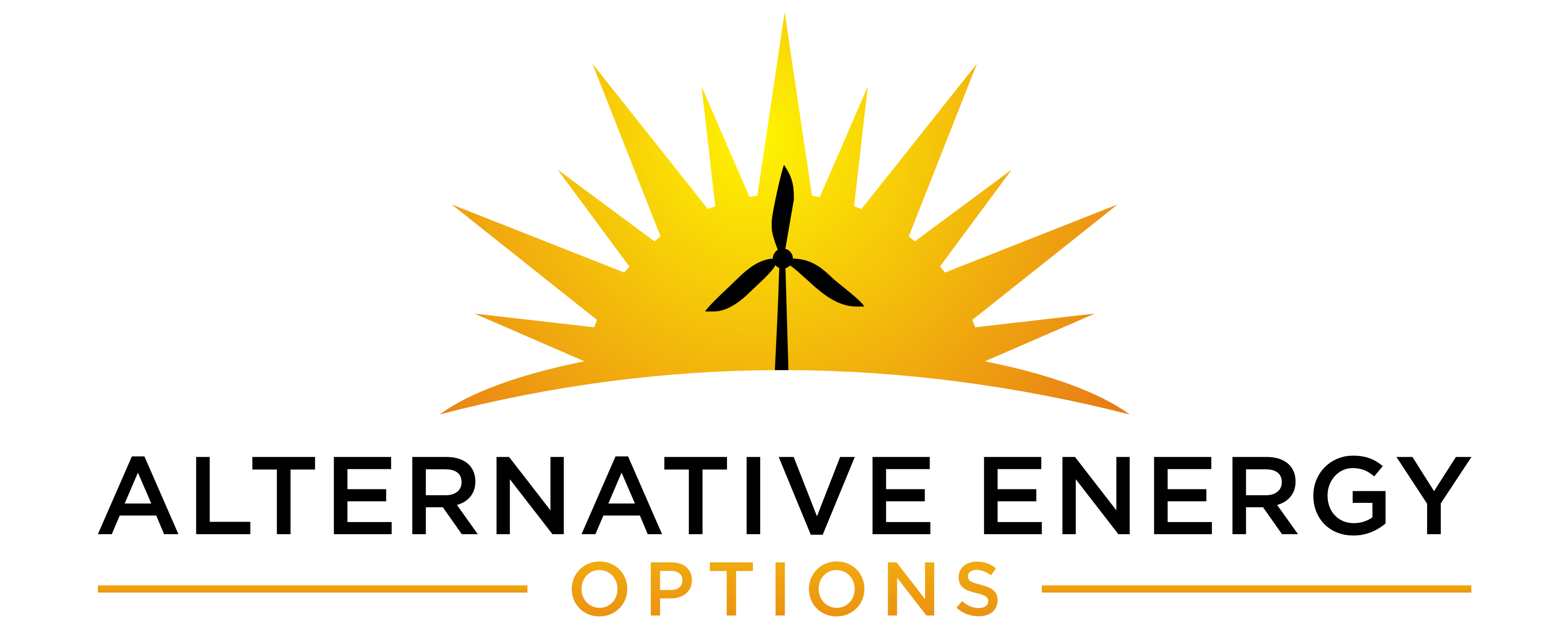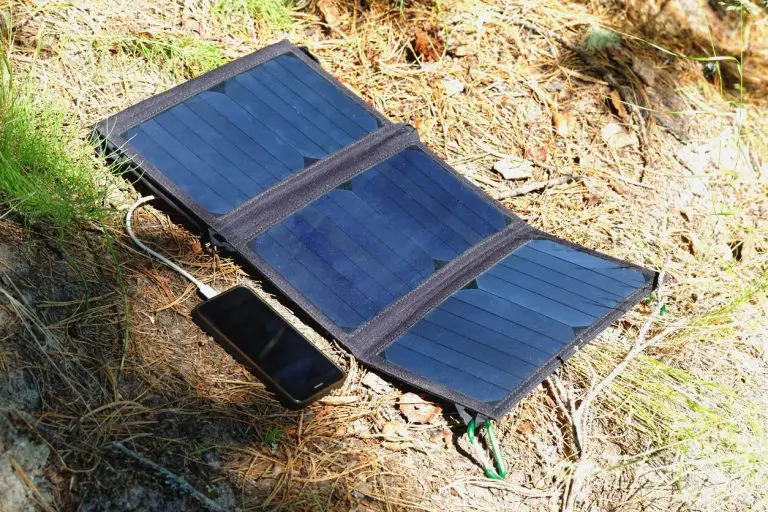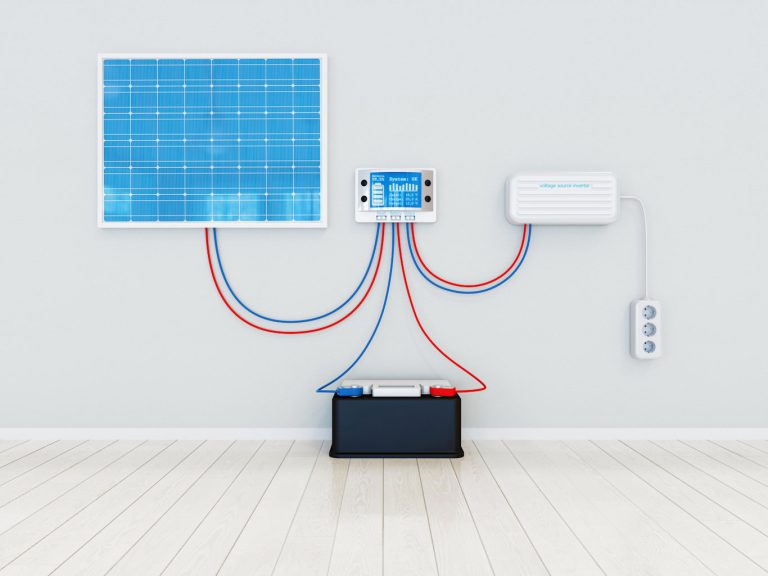How Many Amps Does a Solar Panel Produce?
Solar panels produce between 250 and 400 watts, and wattage is equal to the voltage multiplied by amps. As voltage varies, solar panels produce between 14 and 24 amps, enough to power small appliances. Solar panel efficiency depends on insolation, temperature, shading, and orientation, and advances in technology will inevitably increase efficiency.
Solar panels are rapidly becoming a cost-effective solution for homes and businesses. This sustainable energy solution is now finally a viable alternative for those of us who want to reduce our environmental impact. Power output, or wattage, is an essential factor to consider when comparing solar panel options.
This article will start off with a basic explanation of solar and then clarify the terms volt, amp, and watts. I’ll cover which factors influence solar panel efficiency. And I’ll give you five tips to reduce electricity and use solar power effectively.
Solar Explained
A photovoltaic (PV) cell, also known as a solar cell, converts sunlight into an electric current with usable electricity as a result. Sunlight is composed of solar energy particles, also referred to as photons. Incoming sunlight gets absorbed by the semiconductor material of a solar cell and produces electricity.
A solar panel is composed of numerous solar cells. While similar to battery cells, cells in a solar panel are designed to generate electricity by capturing sunlight. A solar array is a collection of several solar panels that generates electricity as a system.
The most common semiconductor material in solar cells is silicon. It is present in 90% of the solar panels currently on the market, and it is a naturally abundant chemical element. While gallium arsenide has certain advantages over silicon as a semiconductor, it is currently too expensive for mass production.
The Math Behind Voltage, Amperage, and Wattage
Let’s do a quick review of the basic units of measurement for electrical power — namely, voltage, amperage, and wattage.
Terminology
A volt (V) is the unit measuring electric potential difference. Voltage measures how much electrons want to be somewhere. It’s also described as electromotive force and, in this sense, can be best compared to the workings of water pressure.
An ampere (A), commonly referred to as amp, is the unit of electric current. The current is the total amount of electrons that flow through a circuit and subsequently generate heat, which, in turn, disperses power. This power output is wattage, also shortened to watt (W), and measures the scale of energy movement.
The most basic circuit involves a single resistor, one volt, and one amp. All three are related to one another by Ohm’s law. An ohm essentially measures resistance, and one amp equals the current produced by one volt through the resistance of one ohm.
How to Easily Calculate The Conversion
Wattage is calculated by multiplying volts by amps. We need to work with this equation in mind if we want to solve such problems as “How many amps does a 300-watt solar panel produce?”
In this example, we presume that 17 volts are applicable. You’ll notice that we have written out the full equation below, with both the volt and watt figures filled in.
Amps x 17 volts = 300 watts
300 watts/17 volts = 17.65 amps
The result indicates that a 300-watt panel will produce 17.65 amps.
The voltage per solar panel varies as a result of several external factors that we will discuss further into the article, so make sure to keep reading.
How Many Amps Does a Solar Panel Produce?
Let’s take another example: how many amps does a 200-watt solar panel produce? This question is important since solar panels are commonly used to charge a battery, and battery capacity is measured in amp-hours.
To answer this question, we must account for the size of solar panels, as this impacts how many volts the solar panel produces.
The Size of the Solar Panel
The voltage output from a single PV cell is around 0.46 of electricity at the normal operating temperatures. Solar power panels consist of different configurations and contain anywhere from 32 to 144 cells. A 32-cell panel produces 14.72 voltage — 0.46 x 32 = 14.72.
Popular sizes are 60-cell and 72-cell solar panels. A 72-cell solar panel contains 6 columns of 12 cells each and is 39 inches wide with an average length of 78 inches. Most home solar panels measure about 65 inches high by 39 inches wide.
Scenarios
Let’s look at three unique scenarios to determine how many amps a solar panel produces.
Scenario 1: How many amps does a 200-watt solar panel produce?
| Cell # | Watt | Voltage | Amps |
| 60-cell panel | 200 | 27.6 | 7.25 |
Equation: 7.25 x 27.6 volts = 200 watts
Scenario 2: How many amps does a 100-watt solar panel produce?
| Cell # | Watt | Voltage | Amps |
| 72-cell panel | 100 | 33.12 | 3.02 |
Equation: 3.02 x 33.12 volts = 100 watts
Scenario 3: How much power does a 400-watt solar panel produce?
| Scenario 3 | # cells | Watt | Voltage | Amps |
| 32-cell panel | 400 | 14.72 | 27.17 |
Equation: 27.17 x 14.72 volts = 400 watts
Each solar panel contains a Standard Test Condition rating (STC) that indicates their power output in watts. This power rating is a helpful indicator and showcases the best possible power generation outcome under ideal circumstances. However, ideal circumstances shift and change in the real world.
Solar panel efficiency, and thus the conversion rate of a PV cell into usable electricity, depends on a number of factors. Understanding which factors improve overall efficiency is crucial to promote the use of clean energy over conventional sources of energy. Let’s examine those factors in the next section.
What Affects Solar Panel Efficiency?
Various external factors affect the photovoltaic output voltage and, therefore, the efficiency of solar panels. Whereas a decade ago, solar panels produced an efficiency rating of 15%, this has increased to 19% and, in some cases, as much as 26% in commercial PV cells. We have listed the four factors that influence solar panel efficiency the most.
Insolation
Insolation refers to incoming solar radiation onto the earth. In principle, higher solar insolation results in higher solar PV energy generation. Direct insolation can be measured in kilowatt-hours per square meter per day or the amount of energy covering an area for a full year, expressed in watts per square meter.
Insolation varies throughout the year due to the sun’s position in the sky, day length, sky cover, and pollution. These factors influence the level of sunlight that gets absorbed by the earth and therefore makes it difficult to predict insolation.
This has given rise to solar radiation prediction models that forecast insolation to increase solar panel efficiency. The majority of these solar radiation prediction models are complex and require software that is not accessible to the average household investor.
Temperature
Solar cells, and thus, solar panels, actually work best at low temperatures. Warmer temperatures have an unfavorable effect on the power output of solar panels and cause a decline in solar panel efficiency. While higher temperatures can somewhat increase the current, it leads to a decrease in voltage.
Solar panels are generally tested at about 77°F. Voltage remains stable between 77°F and 95°F. Temperatures above 111°F demonstrate a drop in voltage, indicating the impact of temperature on voltage output.
Shading
It is essential to minimize shading to maximize solar panel efficiency. Setting up your solar panel where there is no shade is the easiest way to avoid loss in output voltage, but, in some instances, this is not possible.
Luckily in most cases, shading is fairly easy to manage by cutting down branches or placing the panel on the most optimum location to start off with. Shade affects the performance and electricity output of the entire panel, not just the affected area.
Orientation
The direction solar panels should face for optimum sun exposure varies depending on location. The more direct sunlight falls onto your solar panels, the higher the yield. In the Northern Hemisphere, the advice is to position solar panels south-facing.
Optimizing and adjusting your solar panel tilt can help maximize solar power production and is recommended up to four or five times anually. In fact, models that ignore optimal tilting may significantly underestimate PV potential and therefore undermine solar panel efficiency. The angle depends on location, sun height, and one-axis horizontal tracking.
What Can You Power With a Solar Panel?
In order to find out what you can power with a solar panel, we need to look at the ability to store solar energy and the average power consumption versus power usage.
Battery Storage
Solar panels are not directly used to charge a device. In most cases, the solar power generated charges a battery. The advantages of having a battery are the storage factor and having the ability to regulate the power flow to the specific device.
Depending on your budget, lithium-ion batteries are considered to be the best option for a solar panel and have a minimum life warranty of 10 years. When picking the size of your battery, keep in mind your power usage, the number of days with minimal solar power output, the depth of discharge of the battery, and your system’s voltage.
If you desire to know more about solar panels and battery storage, read our helpful article on “Can I Charge a Battery Directly from a Solar Panel?”
Power Consumption vs. Usage
There is a big difference between power consumption based on where you live, housing types, and how often you use and charge electrical devices. According to the US Energy Information Administration, on average, an American household uses 11,000 kilowatt-hours (kWh) per year.
A 100-watt solar panel can be used to charge a variety of small devices. This could be charging a laptop for a few hours each day, depending on its wattage and your overall power consumption. Plus, it can, in ideal circumstances, power a light for up to 33 hours.
The advantage of a larger 400-watt solar panel is that you generally have a few days of reserve, depending on your usage and without any other sources of recharging. A 400-watt solar panel has the capability of powering an energy-efficient fridge, multiple small devices, such as phones, tablets, and laptops, and televisions up to 32 inches.
To discover more about powering your fridge with solar panels, read our helpful article on “How Many Solar Panels Does It Take to Run a Refrigerator?”
5 Tips to Reduce Electricity and Use Solar Power Effectively
Using solar power energy goes hand in hand with reducing electricity to ensure solar power is used effectively. There are various tips you can implement right away, and we have highlighted the five most important ones here.
Reduce Electricity Consumption
This almost sounds redundant, but reducing overall electricity consumption, whether in your household or at your company, is crucial to using solar power effectively.
Unplug unused electrical devices and appliances or, at the very least, ensure that standby mode is turned on for all. Install timers on energy-heavy appliances, and use a power strip to reduce plug load.
Install LED Lights
Replacing your current light fixtures with LED lights is instrumental. While LED lights currently remain more expensive than regular light bulbs, the price has come down considerably, and the investment pays off within a year or two. Plus, LED lights last substantially longer, as they only require 10% of electricity to produce light.
Synch High-Energy Devices with Solar
Appliances with high energy consumption are best used during the day when solar energy production is optimum. While this goal might not always be achievable due to power output and solar energy capacity, it is a good rule to strive for.
It will conscientize you about high-energy appliances and will make you think twice before washing another load, running the dishwasher, or using the kitchen stove.
Reduce Hot Water Consumption
Since hot water is expensive and directly linked to your water heater, reducing it will immediately lower electricity consumption. Take fewer showers and turn off the tap when shaving, washing hands, and brushing teeth.
Other factors that will reduce your electricity bill are fixing a leaking faucet, washing full loads in cold water, and investing in a solar water heater.
Store Your Solar Power
While home-based solar energy systems are connected to the electricity grid, investing in a solar battery can enable you to meet most of your own consumption without needing to fall back on the power grid. While this might not be achievable year-round, using green electricity from a certified producer can be a good alternative.
Reasons to be Optimistic about a Clean Energy Future
With solar as the world’s favorite new type of electricity generation, there are many reasons to be optimistic about the world’s clean energy future.
Costs Are Declining Rapidly
The cost of solar power has dramatically decreased in the last decade. Its production has gathered global attention, and in many countries and economies, solar power has become the most affordable option of renewable energy.
Popular, Government, and Company Support
With 9 of 10 Americans supporting the expansion of solar power, popular support is clear-cut. Many advanced and emerging economies, including the European Union, are also pushing for clean energy initiatives and investment and reducing carbon emissions.
This consciousness and proactiveness is also visible in the private sector with a drive to reduce emissions and invest in renewable and green energy.
Increased Investment & Innovation
Investment and budget allocation to clean energy research and development have simultaneously skyrocketed. Investing in solar energy has become a popular choice, not only due to its favorable return on investment but also because of added benefits such as tax incentives, self-reliance, and environmental conservation.
This, in turn, has given rise to significant innovation in sustainable solar power storage solutions, frontier technologies, and unlocking hydrogen’s potential.
Final Thoughts
A solar panel’s output power depends on the panel’s size and the efficiency of the PV cells. Solar panel efficiency, in turn, is affected by insolation, temperature, shading, and orientation. In ideal circumstances, a 250- to 400-watt solar panel can produce between 14 and 24 amps.
Storing these amps in a solar battery will increase your ability to regulate and build a reserve in solar energy. This can power a number of electrical devices and appliances and reduce your dependency on the power grid significantly.
To further lower your electricity bill and effectively use your hard-earned solar power, reduce overall electricity consumption, install LED lights, synch high-energy devices with solar power, and reduce hot water consumption.
Declining costs, growing multi-level support, and increased investment and innovation across the globe are all indicative of an accelerated drive towards sustainable clean energy.







